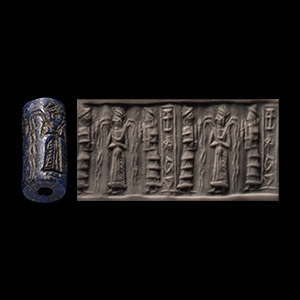Sold for (Inc. bp): £2,210
Complete and of spherical form, containing clay 'tokens'; the outer face impressed with enigmatic motifs. 190 grams, 64 mm
Specialised collection of cuneiform texts, the property of a London gentleman and housed in London before 1988.
Thence by descent to family members.
Examined by Professor Wilfrid George Lambert FBA (1926-2011), historian, archaeologist, and specialist in Assyriology and Near Eastern archaeology, in the late 1980s and early 1990s. The collection is exceptional for the variety of types, including some very rare and well preserved examples.
Accompanied by a copy of two previous illustrated and typed catalogue pages.
Cf. The Oriental Institute Museum, Woods, C. ed., Visible Language: Inventions of Writing in the Ancient Middle East and Beyond, University of Chicago, 2010, p.68, for this type of object and the whole article for relevant discussion.
The tokens sealed within the bulla are believed to have been used as part of the accounting process in Sumerian or early Uruk agriculture.
Sold for (Inc. bp): £1,950
Displaying the contents of a letter over both principal faces and side edges, reading:
1-2) Say to [...], thus says [...].
3) About the people who perjured themselves against Sîn and Šamaš,
4) I keep writing to you. You didn't send them to me.
5) The money I find myself constantly looking for is not yours!
6) Isn't it the money of the god of your city and aren't you going to get yourself killed?
7) This money belongs to Sîn and Šamaš.
8-9) Pirhi-Amurru, who took (to marry) the daughter of the leader of the troop,
9-10) had no right since his father, his father's father to kidnap a foreign servant. Now he must give her back in his own hands ten talents of silver and two talents of gold [...].
12-13) Why did an army of 10,000 soldiers [who] sit before you] not give [to ... but]
14) give the daughter of the chief of the soldiers to Pirhi-Amurru?
15) Now I have just dispatched my messengers to you.
16-17) To Šamaš-tayyar their chief give the daughter of the chief of the soldiers!
18) In addition, let me take Siriša (?) with her.
19-20) I want to see (from you) in these things a complete commitment. [...]
22) Imgur-[... NP...],
23) Ibbi-ilabrat, [NP],
24) Ṣilli-bitum, Gimil-Ak[kadu (?)... and NP],
22-25) send me these people.
26) Why have the citizens of Emut-bal (?)
27-28) who reside before you, taken the lead...? And ...
29-30) Babylon ... sent you a written warning concerning you thus: 'the troops ...'
32) 20 troops of mine [...].
33) You brought oxes and sheep.
34-35) The fact that I (who am) your ally ... keep writing to you
concerning ... and Pirhum...but you did not have me (them) drive. (Lacunar).
1') I keep hearing about... the treasure of Sîn and Šamaš.
2') My messages to you...
3')Write to me (if there is) a difficulty
4'5') so that I may write for the treasure to be loaded (on a boat). [...]. 207 grams, 10.8 cm
Specialised collection of cuneiform texts, the property of a London gentleman and housed in London before 1992.
Thence by descent to family members.
Examined by Professor Wilfrid George Lambert FBA (1926-2011), historian, archaeologist, and specialist in Assyriology and Near Eastern archaeology, in the late 1980s and early 1990s.
The collection is exceptional for the variety of types, including some very rare and well preserved examples.
Sold for (Inc. bp): £4,420
Roughly tabular and bearing impressed cuneiform text arranged in vertical columns to five of its six faces. 682 grams, 17.5 cm
Ex French art market.
with Boisgirard & Associés, Paris, 14 February 2005, lot 246.
Private Swiss collection since 2005.
This lot has been checked against the Interpol Database of stolen works of art and is accompanied by search certificate no.11638-198993.
Cf. The Metropolitan Museum, accession number 62.85.1, for a 13th century Assyrian tablet.
Sold for (Inc. bp): £1,430
With cuneiform text to one broad face; old collector's label 'A1' affixed at the time of Professor Lambert's inspection. 2.27 kg, 25 cm
Specialised collection of cuneiform texts, the property of a London gentleman and housed in London before 1992.
Thence by descent to family members.
Examined by Professor Wilfrid George Lambert FBA (1926-2011), historian, archaeologist, and specialist in Assyriology and Near Eastern archaeology, in the late 1980s and early 1990s.
The collection is exceptional for the variety of types, including some very rare and well preserved examples.
Sold for (Inc. bp): £8,450
Written across two principal faces and three side edges, reading:
1-2) Say to Zakur-ahum, thus says Uzazza, your brother.
3) I have read the tablet you sent me. You wrote to me as follows:
4-5)'Five nomadic Suteans plundered the district of Zippat and I sent a troop.
6-7) I drove them back. I prevented them from taking anything.
7-8) So this troop left empty-handed. It is to be feared that they will go to the land of Arrapha and raise
havoc, take action!'
11) This is what you wrote to me, and I rejoiced greatly.
12) In your tablet is written:'500 nomadic Suteans'.
13) Now, your servants whom you sent to me told me this:
14) 'A troop of 1,500 men has come.
15) Among them were many men with bows.'16 This is what they told me. Now never
17) have there been archers among the nomad-Suteans.
18) Is it not to be feared that the heavily-equipped
19) part of a foreign army is here itself comprising the nomad-Suteans with their bows?
20) The (result of the) divination I found said: 'Fire will devour the base of the reed.'
21) [...] its ... will not reach me.
22-23) [Now], shall I rejoice over the heavily equipped troop (that is) there?
24) [...].
25-26) Now investigate this troop.
26-27) Send a full report urgently one way or the other,
28-29) so that I may circulate [a swift messenger] so that
29-30) the whole country may be gathered [in my fortresses] and so that I may take action.
31-33) Moreover, earlier, nomadic Suteans assaulted the palace cowherds one evening and
33-34) carried away all the cows from the palace. They left nothing behind.
35-36) There are none left, including the cows they had been entrusted with that evening. The next day,
37) a rescue troop (sent) by Ašrum, in pursuit of them
38) went as far as the banks of the Euphrates, but 39 returned empty-handed.
39) Another thing,
40) concerning what you wrote to me:
41-42) 'Looters set up a siege instrument- kalbanatum against a fortified farm and killed people. In addition, they carried off ten oxen.
43) And Ašrum went in there. Check that 44 their oxen no longer disappear.' This is what you wrote to me.
45-46) Now, shall I rejoice in this matter, or shall I [not] [...] them [...].
47-48) Now, is there a plunderer who can plunder on my watch? Now, when I hear (about them)
49-50) and as soon as I send a message, do I not put them on the pal? No doubt
51-52) these people are foreigners, but you consider them to be Arrapha inhabitants! Now, precisely according to what you've written to me,
53-54) I'm going to send a fast messenger to the very interior of Arrapha and carry out a check.
; repaired. 211 grams, 10.8 cm
Specialised collection of cuneiform texts, the property of a London gentleman and housed in London before 1992.
Thence by descent to family members.
Examined by Professor Wilfrid George Lambert FBA (1926-2011), historian, archaeologist, and specialist in Assyriology and Near Eastern archaeology, in the late 1980s and early 1990s.
The collection is exceptional for the variety of types, including some very rare and well preserved examples.
Sold for (Inc. bp): £2,080
Bearing an administrative text including numbers; roughly pillow-shaped; pierced. 182 grams, 10.8 cm
Specialised collection of cuneiform texts, the property of a London gentleman and housed in London before 1992.
Thence by descent to family members.
Examined by Professor Wilfrid George Lambert FBA (1926-2011), historian, archaeologist, and specialist in Assyriology and Near Eastern archaeology, in the late 1980s and early 1990s.
The collection is exceptional for the variety of types, including some very rare and well preserved examples.
Sold for (Inc. bp): £1,300
Of pillow-shape with lines of impressed cuneiform text to both principal faces, reading:
1) 1 wineskin suspended from a rope,
2) (for) Šu-Sîn the royal messenger
3-5) when he came <...>.
6) Intermediary Ašgi-tillassu, chief of the weavers.
7) Expense.
8) In the month šugargal,
9-10) the year bis when the priestess of Eridu was 'hired'. 24.2 grams, 36 mm
Specialised collection of cuneiform texts, the property of a London gentleman and housed in London before 1988.
Thence by descent to family members.
Examined by Professor Wilfrid George Lambert FBA (1926-2011), historian, archaeologist, and specialist in Assyriology and Near Eastern archaeology, in the late 1980s and early 1990s. The collection is exceptional for the variety of types, including some very rare and well preserved examples.
Sold for (Inc. bp): £9,100
Written over two faces; lentoid cross-section. 61.1 grams, 72 mm
Specialised collection of cuneiform texts, the property of a London gentleman and housed in London before 1992.
Thence by descent to family members.
Examined by Professor Wilfrid George Lambert FBA (1926-2011), historian, archaeologist, and specialist in Assyriology and Near Eastern archaeology, in the late 1980s and early 1990s.
The collection is exceptional for the variety of types, including some very rare and well preserved examples.
This lot has been checked against the Interpol Database of stolen works of art and is accompanied by search certificate no.11869-201159.
Sold for (Inc. bp): £1,170
With frieze depicting a seated figure holding up a vessel in one extended hand, star and crescent above; before him, a facing figure in fringed robe and another in flounced robe with hands raised; two columns of cuneiform text; supplied with a museum-quality impression. 2.23 grams, 17 mm
From an important London, UK, collection, 1970-1990.
Examined by Professor Wilfrid George Lambert FBA (1926-2011), historian, archaeologist, and specialist in Assyriology and Near Eastern archaeology, in the late 1980s and early 1990s.
Sold for (Inc. bp): £1,170
With detailed frieze including a standing figure with tall helmet, raising his arm to strike a similar figure with both hands raised, bird above the scene and ankh below, smaller combat scene below with beast and kneeling figure with an axe; guilloche and other items in the field; supplied with a museum-quality impression. 4.04 grams, 18 mm
From an important London, UK, collection, 1970-1990.
Examined by Professor Wilfrid George Lambert FBA (1926-2011), historian, archaeologist, and specialist in Assyriology and Near Eastern archaeology, in the late 1980s and early 1990s.
Sold for (Inc. bp): £1,300
With frieze depicting a figure in ankle-length robe drawing a bow towards fleeing winged animals, serpents below; supplied with a museum-quality impression. 2.11 grams, 17.83 mm
From an important London, UK, collection, 1970-1990.
Examined by Professor Wilfrid George Lambert FBA (1926-2011), historian, archaeologist, and specialist in Assyriology and Near Eastern archaeology, in the late 1980s and early 1990s.
With frieze depicting central standing figure (the god Enki) in ankle-length robe holding a vase from which four jets of water flow downwards; two flanking attendants in flounced robes; panel of cuneiform text; supplied with a museum-quality impression. 9.66 grams, 20 mm
From an important London, UK, collection, 1970-1990.
Examined by Professor Wilfrid George Lambert FBA (1926-2011), historian, archaeologist, and specialist in Assyriology and Near Eastern archaeology, in the late 1980s and early 1990s.

.jpg)


.jpg)

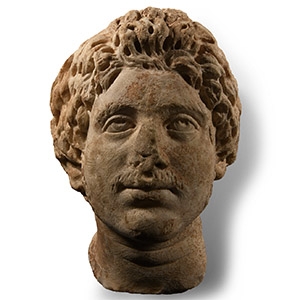
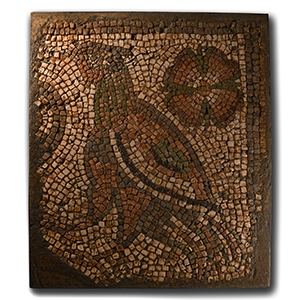
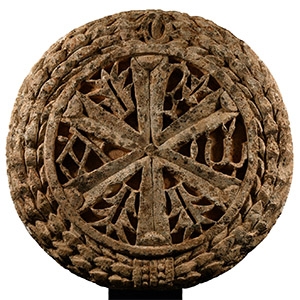


.jpg)


.jpg)
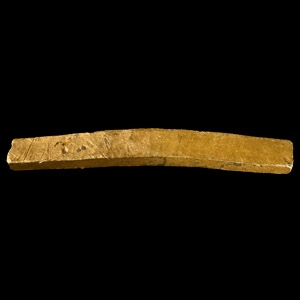
.jpg)
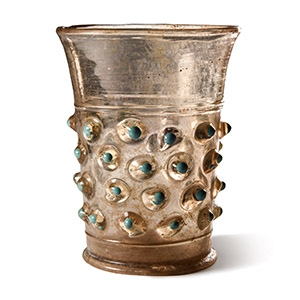

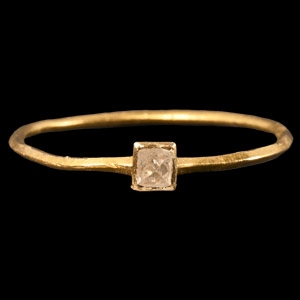






.jpg)



